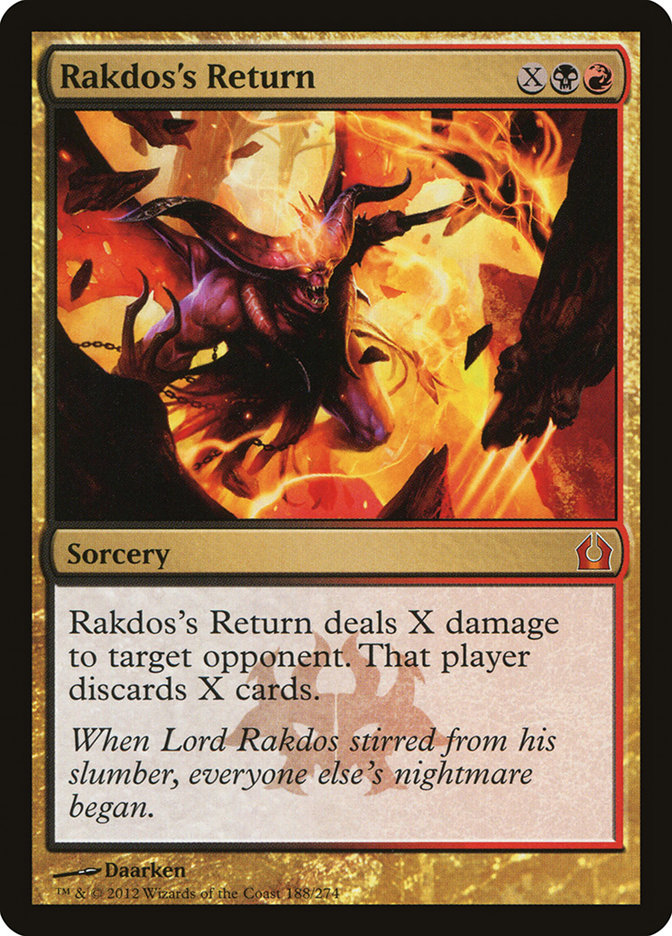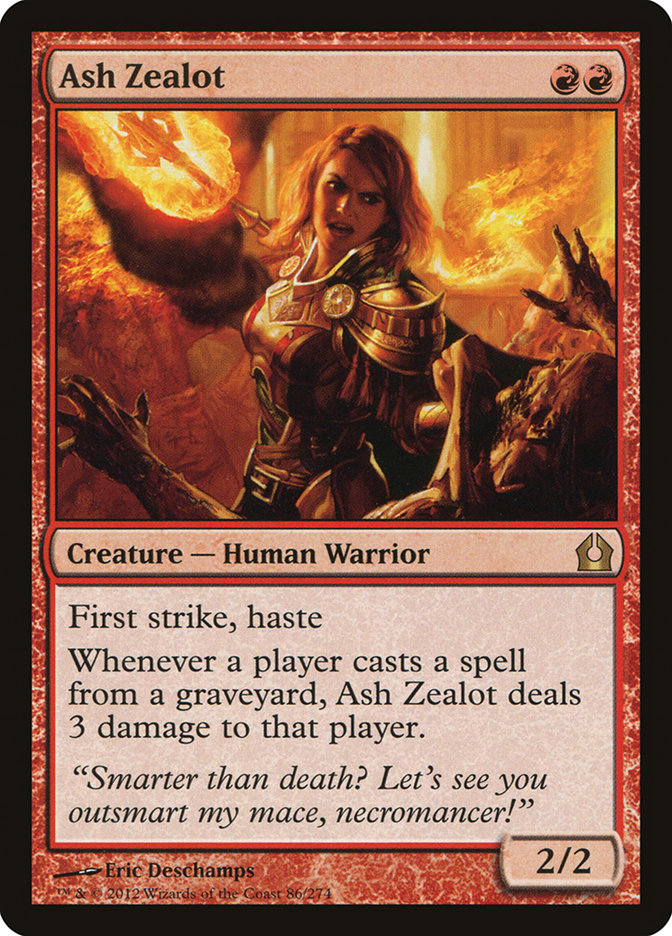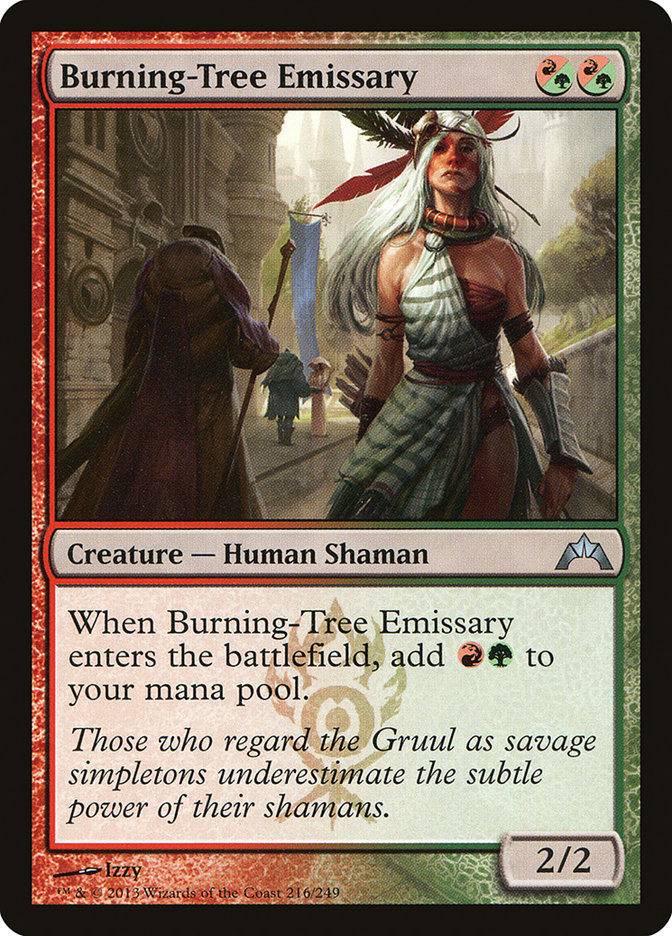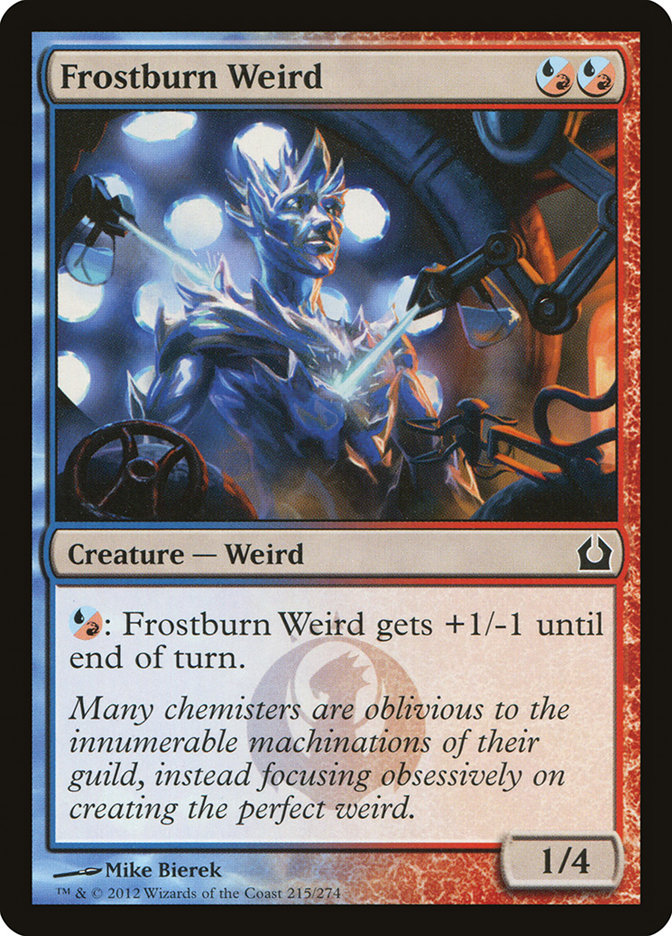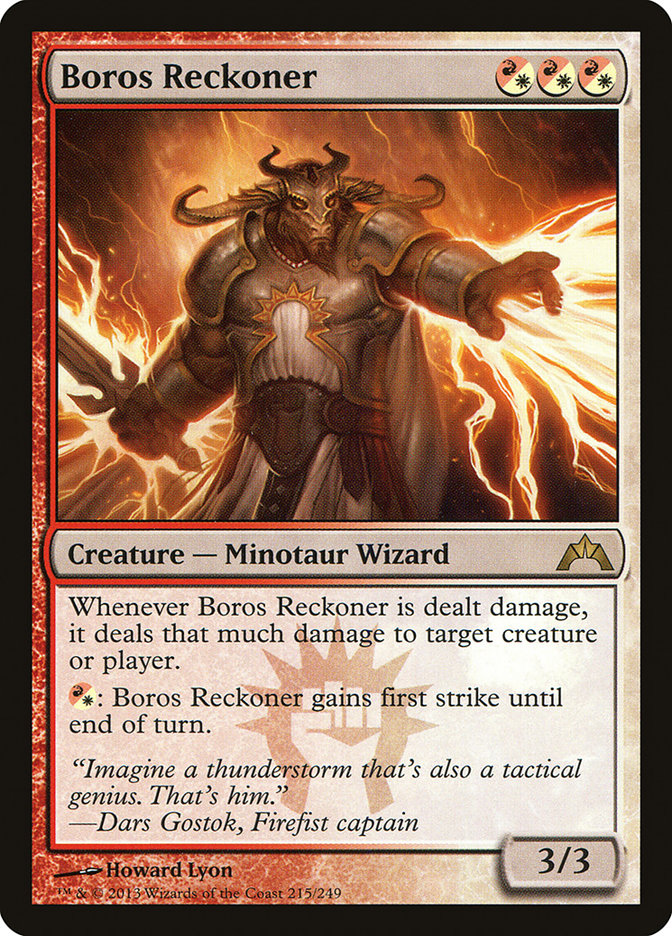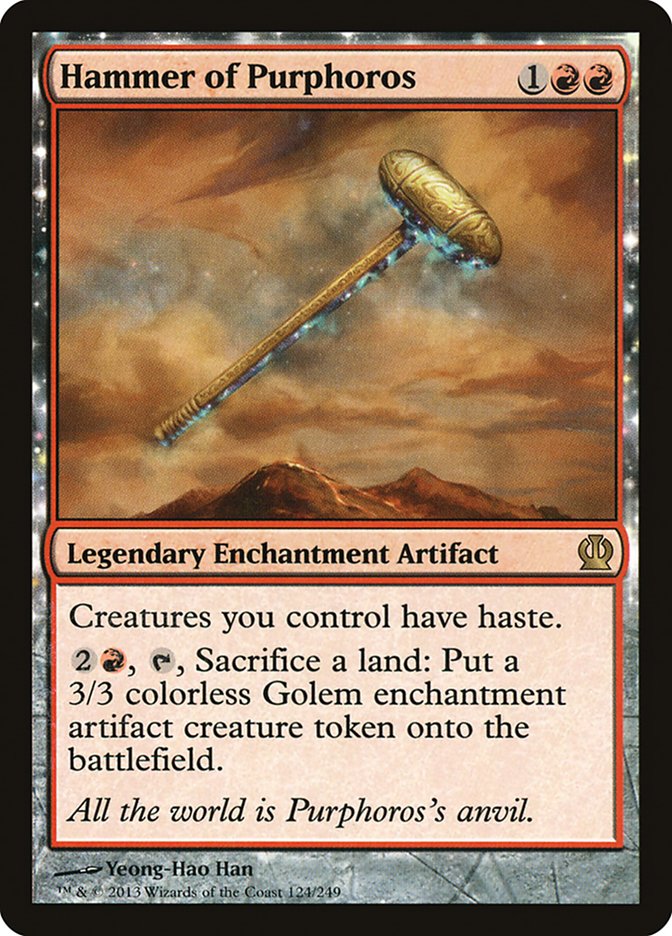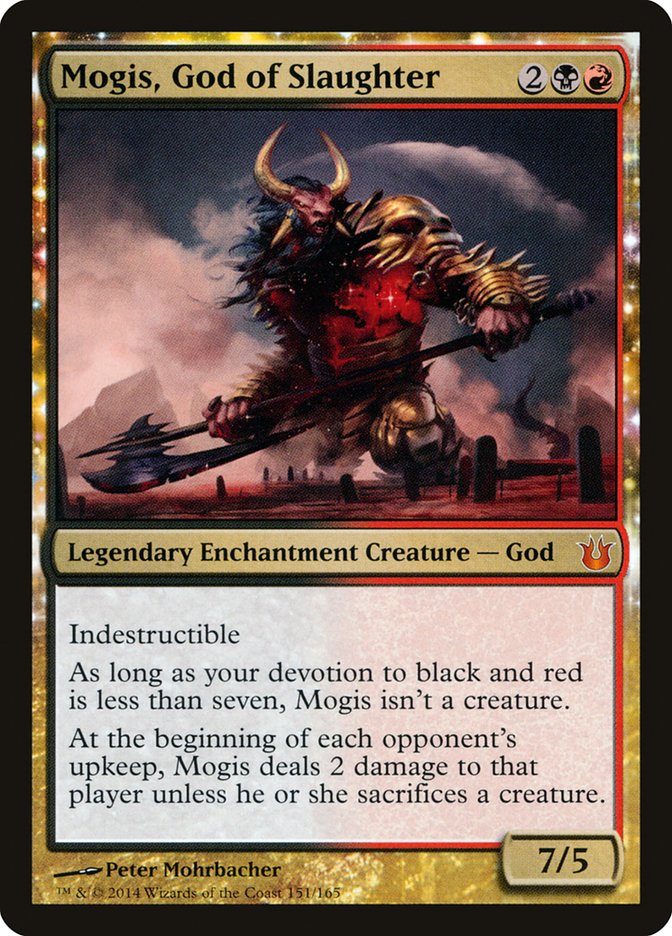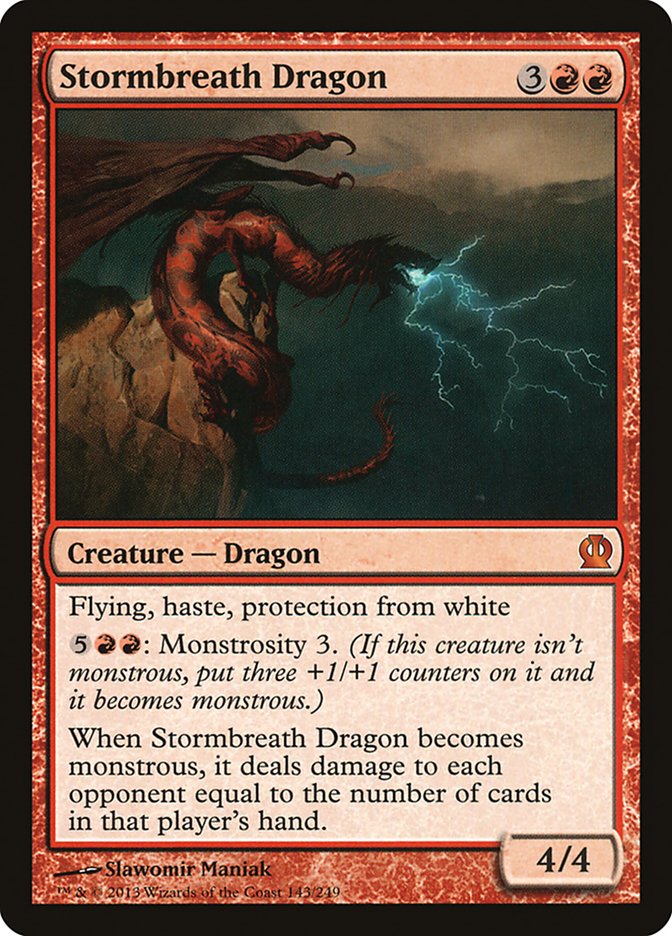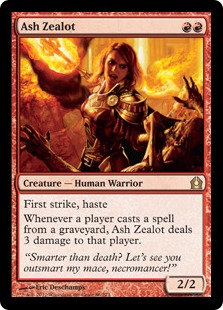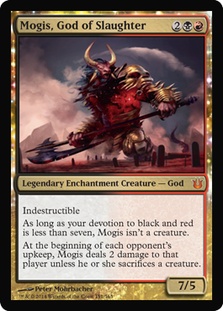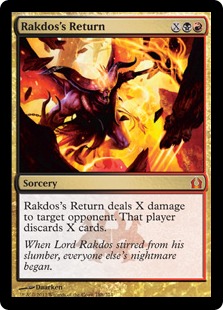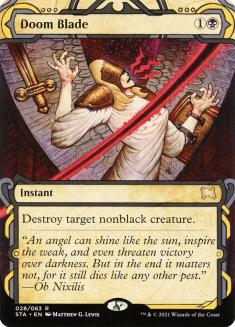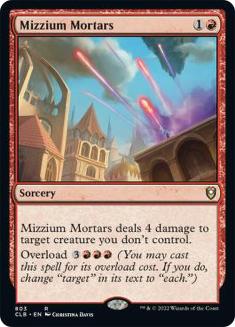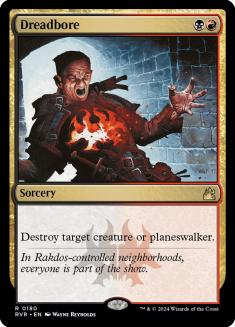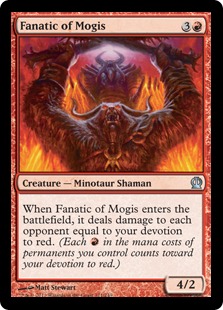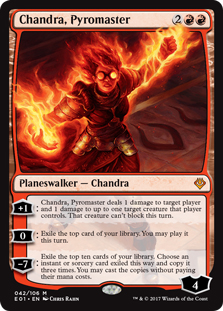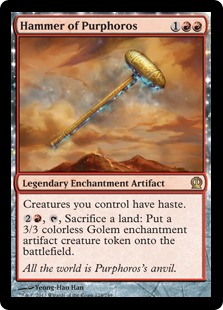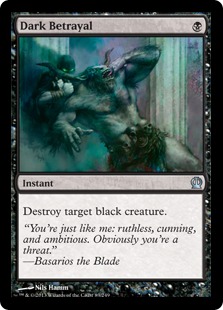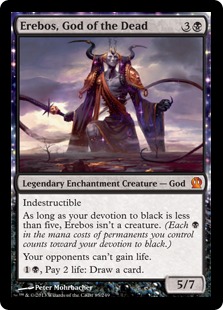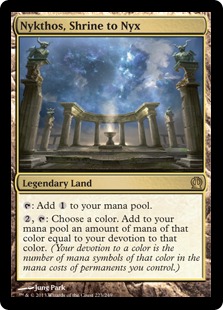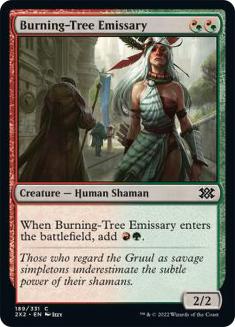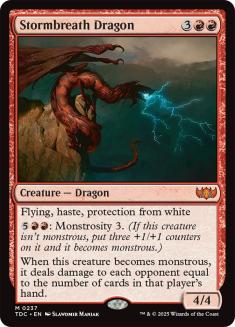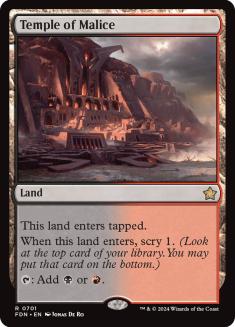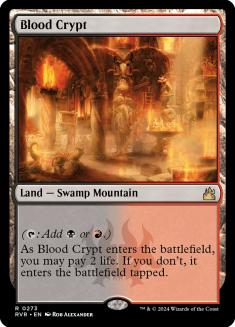"Clap everybody and get out of your seats, ’cause I’m Mogis Yo and here come the beats!"
Now that I’ve got your attention and this song stuck in your head, let me remind you of one of the most powerful yet underplayed cards in Standard:
First there was Mind Twist, and then Mind Shatter came along. Both of these powerful spells left your opponent playing off the top of their deck. Players would always use their "one time," rub their hands together, and tap the top of their deck in hopes of their draw bringing them something nice.
Although Rakdos’s Return doesn’t make the opponent discard their hand at random, it hardly matters in the deck I’m about to show you. Since you’re able to generate a massive amount of mana using Nykthos, Shrine to Nyx, you can destroy your opponent’s hand and life total as early as turn 4.
About a week ago I attended an Invitational Qualifier, and there I saw my friend Terrence Gluck playing a R/W/B Devotion deck. The deck looked interesting because of Rakdos’s Return, and I decided to work on it with my good friend Erik Smith, who put most of the testing in. We both came to the conclusion that R/B Devotion has a place in Standard and is a viable contender for one of the top decks in format.
Erik put together a great initial list, and after a few tweaks here’s what we have:
Creatures (26)
- 4 Ash Zealot
- 4 Frostburn Weird
- 4 Burning-Tree Emissary
- 4 Boros Reckoner
- 4 Stormbreath Dragon
- 4 Fanatic of Mogis
- 2 Mogis, God of Slaughter
Lands (25)
Spells (9)

I think the deck is pretty awesome and something different in the metagame. Because of this, I want to discuss the card choices, the benefits of having black over white, and some sideboard strategies for the popular matchups in Standard.
Card Choices
Let’s start with the creature suite.
4 Ash Zealot
Ash Zealot is very important to the deck’s game 1 plan for a few reasons. The most obvious one is that it supplies two devotion to red while applying fast pressure on your opponent. However, Ash Zealot is also able to play excellent defense, which is highly relevant in many of the creature matchups. Although Ash Zealot cannot be cast off Burning-Tree Emissary, it’s still the two-drop you want in this deck.
4 Burning-Tree Emissary
I sometimes see R/W Devotion decks that are not running this card. Now, I don’t want to say that’s flat-out wrong, but I highly suggest running four copies of Burning Tree-Emissary. The reason is that the R/x Devotion decks tend to be very high in variance, which means you should push your edges and have your nut draws be the best they can be. Burning-Tree Emissary allows you do to ridiculous things with Nykthos, Shrine to Nyx, such as Rakdos’s Return your opponent’s hand away on turn 4, play out a turn 3 Stormbreath Dragon, or even just empty your hand and have an army of creatures.
4 Frostburn Weird
Who are you calling weird? Seriously, this creature is just awesome. It’s able to play both offense and defense very well along with providing a nice addition to your devotion to red count. I really like the fact that it has the ability to have either four power or four toughness depending on the situation.
4 Boros Reckoner
Boros Reckoner made a giant splash at Pro Tour Gatecrash, and I’m sure many people were happy about that. It is just a superb creature. Boros Reckoner specifically shines in this deck because it gives additional red devotion, which coincides with the deck’s game plan. Sometimes I feel like Boros Reckoner does it all since it is difficult to block, is hard to attack through, and often gives you card advantage since it’s able to take out two creatures in one shot.
2 Hammer of Purphoros
Although Hammer of Purphoros is technically not a creature, it’s often one of the most unique cards in many matchups. It allows you to turn extra lands into threats but more importantly adds to your nut draws. Being able to slam a Fanatic of Mogis on turn 4 with haste and dealing a large amount of damage to a player or planeswalker is super valuable. In fact, there’s even an additional copy in the sideboard to bring in when playing against control decks and Mono-Black Devotion.
4 Fanatic of Mogis
As I mentioned, Fanatic is a great answer to planeswalkers and a quick way to close out a game. It really shines against decks that lack removal because your devotion count will add up very fast and you’ll be able to do a great deal of damage. In matchups where removal is heavy or an attrition war will occur, Fanatic should be sided out in favor of card advantage engines like Chandra, Pyromaster and Erebos, God of the Dead.
2 Mogis, God of Slaughter
Mogis is the new hit in the deck. Before Mogis, Purphoros, God of the Forge was the God of choice. However, unlike the white version that runs Assemble the Legion, the black version doesn’t produce enough creatures to utilize and maximize Purphoros’ abilities. Instead, Mogis, God of Slaughter applies two damage or a sacrifice each turn regardless of whether or not you have a creature on the battlefield under your control. Mogis also gives your opponent a choice, but it’s a difficult one. In many situations that choice might benefit you more than expected, especially when they are unaware of the correct line to take and play either too conservatively or too aggressively.
4 Stormbreath Dragon
This is an efficient costly threat and is easy to make monstrous the turn after it’s played due to having four copies of Nykthos. Besides being a fast heavy hitter, having protection from white means U/W Control has an even harder time dealing with it. Along with discard spells like Rakdos’s Return and Thoughtseize out of the sideboard, you’re able to protect it better from the few answers they may have like Elspeth, Sun’s Champion and Supreme Verdict.
The deck is rounded out with two Dreadbores, two Mizzium Mortars, and three Rakdos’s Returns. Most of the lands are pretty basic; however, as suspected, Nykthos is very important to the overall game plan of the deck. Another land that’s also an impressive addition is Temple of Malice since it allows you to smooth out your draws and search for specific cards you need. Before Born of the Gods, playing R/B meant you had a shaky mana base and were basically forced to play with off-color scry lands to help out your draws.
Why Black Over White
Looking at Erik’s R/W Devotion deck from SCG Invitational: Las Vegas, we can see what’s gained and lost by switching to black:
Creatures (30)
- 4 Ash Zealot
- 4 Rakdos Cackler
- 4 Frostburn Weird
- 4 Burning-Tree Emissary
- 4 Boros Reckoner
- 2 Purphoros, God of the Forge
- 4 Stormbreath Dragon
- 4 Fanatic of Mogis
Lands (24)
Spells (6)

One benefit is that your removal package is changed for the better. Although you now don’t have a real answer to Master of Waves besides overloading Mizzium Mortars, Dreadbore is just such a more powerful and versatile card than Chained to the Rocks. Another difference is that you lose Assemble the Legion against Mono-Black Devotion, but you gain many ways to actually interact with your opponent’s game plan with four copies of Rakdos’s Return and four copies of Thoughtseize in the 75. The black also allows you to change up your game plan after board; in certain matchups, you turn into a R/B Midrange deck to grind out the game.
Matchups
Let’s take a look at how you might want to sideboard against some of the popular matchups.
Mono-Blue Devotion
Out:
In:
Mono-Black Devotion
Out:
In:
U/W Control
Out:
In:
G/R Monsters
Out:
In:
Mulliganing
Of course there are other decks that could be tricky to sideboard against, and how you side in each match should change depending on your opponent’s game plan. The basic plan is to make sure you adjust your card choices and overall strategy accordingly. Except for practicing with the deck and understanding each matchup, you also have to remember that although the deck is very powerful it often needs all of its cards and therefore mulligans slightly poorly. Here are a few hands that might be close, but all are keepable according to Erik Smith (since I don’t really like to mulligan anything) so let’s take a look at his thoughts.
Mountain + Nykthos hands are tricky, and I don’t know if I’ve figured out the right way to handle them yet. I would probably keep this hand on the play and would definitely keep it on the draw. One red source in the first two draw steps with twenty remaining in the deck gives you good odds of dumping your hand early.
I would keep this hand on both the play and the draw. It’s slow but has a lot of potential. The two Temples allow you to fix your early draw steps as well. One two-drop enables a big Rakdos’s Return as early as turn 4. There are a lot of sequences of draws that can make this hand very bad for your opponent and very good for you!
This is a very risky hand. If you’re up against U/W Control, you’re basically dead in the water. However, the removal suite can really put you in charge of the game against most of the other decks in the format. Without any piece of pressure, I would mulligan this hand on the play but keep on the draw, aiming to take on the control role while I find my threats.
Hopefully you now have a feel for how the deck plays out, how to sideboard in popular matchups, and how you should go about evaluating opening hands. With this knowledge and practice, you will have a competitive and unique deck to bring to your next Open, IQ, PTQ, or Magic Online tournament.
As for me, I have been going back and forth between my Esper Midrange deck from my last article with a few minor changes and this R/B Devotion deck.
I was bummed out about the cancelation of the Open Series in New Jersey but definitely understand SCG’s decision. I still managed to pick up a few Open Points by finishing in ninth place on tiebreakers with Esper Midrange at The Tales of Adventure Elite IQ.
I suggest you try out the deck and share your ideas. I look forward to hearing your thoughts on the white splash compared to what I think is the new and improved black splash. Remember that this deck is something you wouldn’t want to (Rakdos’s) return!

